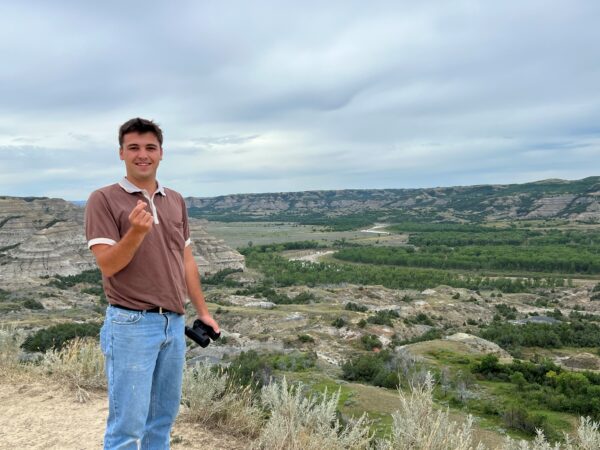noviembre 19, 2024
Posted in: Personas y lugares
Victor trabajó recientemente en Marin Water en colaboración con Grizzlycorps, un programa Americorps de la UC Berkeley. Mientras estuvo allí, trabajó con el departamento de cuencas hidrográficas para coordinar programas de voluntariado que incluían la supervisión de especies raras, jornadas de restauración de hábitats y eventos de cuadrillas de senderos. Antes de eso, Victor sirvió un mandato anterior de Grizzlycorps en Shasta Land Trust, donde ayudó a preparar documentos de referencia, supervisar las servidumbres de conservación y mantener los datos del SIG. Victor Nació y creció en Maryland, donde se licenció en Geografía & Planificación Medioambiental con especialización en SIG por la Universidad de Towson. Trabajó en la gestión de recursos naturales y en la agricultura después de graduarse antes de emigrar al oeste, a California en 2022.
What’s your favorite Sonoma County place to get outside and why?
Anywhere along the Russian River redwoods, especially during the spring and summer months! I love all of the crazy fungi and aquatic life in the area, and my favorite summer days are spent lounging on a beach or floating down the river. Mom’s Beach was one of the first places I visited in Sonoma county and it made me feel truly at home in California.
What’s one fact, statistic, or interesting tidbit about land conservation that you enjoy sharing with others?
Ecosystem services, or natural processes present in the environment to regulate and maintain the health of our planet, are incredibly valuable. Think carbon capture, erosion control, healthy soils for agriculture, etc. In 2018 the WWF estimated the value of these services at $125 trillion. For reference, worldwide GDP in 2018 was just under $87 trillion.
What’s your proudest moment working in land conservation and why?
While working at Shasta Land Trust I had the privilege of working on multiple projects involving the Pit River Tribe of Shasta county. Some of these projects involved placing conservation easements on land already owned by the tribe, but a couple involved actually returning land back to the tribe as part of PG&E’s Land Conservation Commitment. Thousands of acres in eastern Shasta county along culturally and environmentally significant waterways will now be forever protected and stewarded by the native people who have done so for thousands of years. I believe Land Back efforts are incredibly important to maintaining tribal connections to the land and I hope to see similar projects succeed across California in the coming years.
What compelled you to pick a career in land conservation?
Back in Maryland I was fortunate to grow up with a large regional park directly behind my house. This fostered a strong connection to nature from an early age, and as I got older I wished that more people had the opportunity to create those same connections I had to the natural world around them. I saw land rapidly being developed all around me for decades, and it wasn’t until I came to California I even learned what a conservation easement was. I saw firsthand the power of these agreements to permanently protect and conserve land and ever since then I’ve been motivated to involve myself in this work. It’s incredibly impactful for me to think about how the work I do here now will keep Sonoma County wild for generations in the future to create those same bonds I did as a child in the woods back home.
What’s your favorite ice cream flavor and why?
Really anything from The Scoop in Fairfax! Personally I will always go for salted caramel if it’s on the menu.
